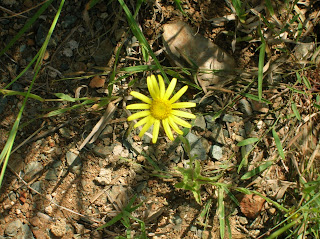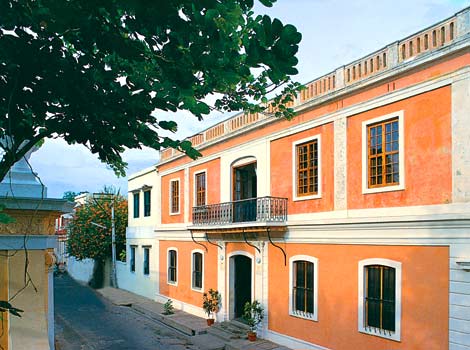
The Malejodi CSA (Community Supported Agriculture) is based on the principle of connecting people to the source of their food. When you join the Malejodi CSA you are entering into a partnership that is dedicated to bringing fresh, organic produce directly from our fields to your table. Your membership helps to provide a ready market for the organic produce that we grow, and in return, Malejodi will provide you with fresh seasonal produce each month.
CSA members make a commitment to support the farm through their membership. By joining, you become an active part of the farm's success and community.
About Malejodi:
Malejodi is located in the foothills of the Western Ghats, near the source of the Nethravathi River in Belthangady taluk, Dakshina Kannada district, Karnataka, about 320 kms from Bangalore. It was purchased by its current owner in 1995, and has been farmed organically for all its life, as far as we can tell.
How Does This Work?
Our 2008 CSA season will begin in March 2008. The season will run for a six month period, and membership can be renewed thereafter every six months.
Produce will be delivered to member’s residences (in the Ujire/Belthangady area, Mangalore and Bangalore) once a month beginning March 2008. Depending on harvest times, the gap between monthly deliveries may be as low as 20 days, and as high as 40 days.
Share Size & Cost
In 2008 we will offer 12 full CSA shares in addition to a limited number of non CSA produce shares (This is for people who want to pick and choose what they want to buy at a fixed price, though Large and Medium share CSA members will have the first priority to both their share of produce and any excess quantities that they may want of the produce).
The following choices are available:
• Large Share (Rs. 1200/month, feeds 4-5 people)
• Medium Share (Rs. 700/month, feeds 2-3 people)
• Non CSA produce Share (a la carte ordering, product availability and prices will be notified by email roughly 2 weeks before delivery for you to place orders by phone or email)
We will accept check payments. We require a non-refundable deposit of Rs. 1500 at the time of requesting membership to hold your share, with the balance of your share price (which is 6 months of payment) due by February 1, 2008.
Membership includes your monthly produce, a newsletter, recipes, and if we get our act together, invitations to CSA work events and farm events and the opportunity to enjoy the farm.
To get more information or to sign up for the CSA, please email us at: malejodi@gmail.com
What Do I Get Each Month?
At Malejodi we grow over 100 varieties of grains, vegetables, fruits, tree crops and herbs. Each month you'll receive a diverse mix of crops that are in season. While no two months will be the same, here is an example of what we think would be a typical Full share in April.
Vegetables:
Ash gourd
Lady-finger (Bhindi)
Bitter-gourd (Karela)
Tomatoes
Various Greens
Brinjal
Beans
Fruits and Tree products:
Mango
Raw jackfruit
Papaya
Coconut
Tender Coconut
Banana fruit
Raw Banana
Grains:
Rice (white or brown par-boiled)
Urad Dhal
Spices:
Ginger
Turmeric powder
Herbs:
Curry-leaves
Coriander leaves
Beauty, Health and Miscellaneous products:
Shikakai powder
Herbal tea
Honey
Since our deliveries are monthly (something necessitated by economic and ecological constraints), we will supply only those quantities of produce that will keep under storage for the appropriate time (a week to two weeks for vegetables, longer for grains, pulses and oils). We will also accommodate requests for some shuffling of produce based on personal preferences (tender coconut instead of coconuts or coconut oil, for example). Our goal is to provide sufficient quantity and variety from the crops we grow to ensure that you receive excellent value for your membership, though the vagaries of nature and farming might go against us on occasionally, hopefully compensated by its bounty at other times.
Crop List
In the 2008 season we are either growing or plan to grow the following*:
Grains:
White rice
Brown rice
Urad dhal
Moong dhal
Sesame
Vegetables:
Lady-finger (Bhindi)
Dry Beans
Brinjal
Elephant Yam
Green Beans
Greens (Basale, harive)
Tomatoes
Melons
Bitter-melon
Bamboo shoot
Snake-gourd
Ash gourd
Summer Squashes
Elephant Yam
Colocasia
Various Herbs and medicinal plants
Fruits and Tree products:
Amla
Avocado
Banana (raw, ripe, flower, and stem)
Breadfruit
Coconut (tender, ripe, copra and oil)
Betel-nut
Cashew nut
Jackfruit (raw and ripe)
Mango (tiny for pickling, raw and ripe)
Sithaphal
Guava
Papaya (raw and ripe)
Pineapple
Pomegranate
Tamarind
Drum sticks
Spices:
Ginger (raw and dried)
Turmeric
Black Pepper
*We may occasionally have to provide produce from other farms in the area to supplement our quantities, and some of the crops here may not be yielding during the first season itself.
===========================
Return/refunds and fine print:
We will need at least 7 full shares to make the project viable. In the event that we have less than 7 sign-ups by January 2008, we will refund your deposit.
Once the CSA begins, and you feel that you are not getting value for your money, we ask that you talk to us and explain the source of dissatisfaction immediately (produce not of adequate quality, too little in quantity, variety of food not what you expected), and give us a chance to correct it during the following month. If you are still not satisfied, we will gladly refund your share price from the point forward of your first telling us of your dissatisfaction.
Malejodi farm
Anand and Alpna
malejodi@gmail.com

















































